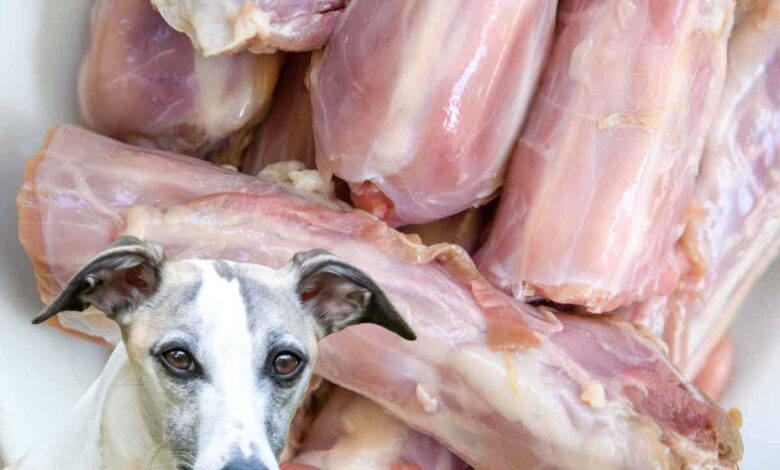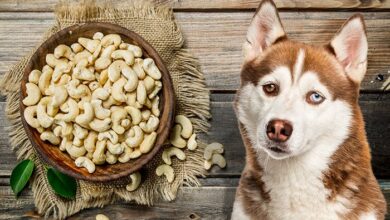Turkey Necks-Is It Safe to Give Your Dog? Expert Advice

Turkey necks provide several key nutritional benefits that can positively impact your dog’s health and well-being. They are notably high in protein, which supports muscle growth and repair. This protein content is essential for maintaining your dog’s muscle mass and strength, promoting overall physical fitness.
Additionally, turkey necks are rich in glucosamine and chondroitin, compounds that contribute to joint health by supporting flexibility and reducing the risk of stiffness. These nutrients are particularly beneficial for dogs prone to joint issues or those needing extra support as they age.
Furthermore, turkey necks contain essential minerals like calcium and phosphorus, which are crucial for maintaining strong bones and teeth. This ensures your dog has a solid skeletal structure, supporting their mobility and overall physical resilience.
Moreover, turkey necks are a lean and healthy treat option due to their low fat content, making them suitable for dogs that require a balanced diet. They also provide vitamins B6 and B12, essential for various bodily functions including metabolism, immune support, and sustained energy levels.
By incorporating turkey necks into your dog’s diet responsibly, you can provide them with a nutritious treat that supports their muscle and joint health, bone strength, and overall vitality. Let’s explore that- Can Dogs Eat Turkey Necks?
Dental Health Advantages of Chewing:
Chewing plays a crucial role in maintaining your dog’s dental health, offering several benefits that contribute to overall oral hygiene:
Natural Teeth Cleaning:
- Chewing helps naturally clean teeth by scraping away plaque and food particles that can accumulate on the tooth surface.
- This action mimics the effect of brushing and promotes healthier teeth and gums.
Strengthens Jaw Muscles:
- Regular chewing exercises and strengthens the jaw muscles, promoting better jaw health and function over time.
- This can be particularly beneficial for dogs that enjoy chewing toys or treats regularly.
Healthier Gums and Fresher Breath:
- Chewing stimulates the gums, increasing blood flow and promoting healthier gum tissue.
- It also helps reduce bacteria in the mouth, contributing to fresher breath for your dog.
Reduces Tartar Accumulation:
- Continuous chewing helps prevent tartar buildup on teeth, which can lead to dental issues such as gum disease and tooth decay.
- By reducing tartar, chewing supports long-term dental health and can minimize the need for professional dental cleanings.
Encouraging your dog to chew on appropriate toys or treats not only satisfies their natural instincts but also supports their dental hygiene. Regular dental care, including chewing time, plays a vital role in preventing oral health problems and keeping your dog’s teeth and gums in top condition.
Potential Risks and Safety Concerns of Chewing Treats:
Chewing treats and toys can offer dental benefits, but it’s essential to be aware of potential risks and safety concerns for your dog:
Risk of Choking:
- Smaller dogs and aggressive chewers may be at higher risk of choking on small pieces that break off from treats or toys.
- Always supervise your dog during chewing sessions to intervene if needed.
Potential for Bone Splintering:
- Some treats, especially those with bones or hard components, can splinter when chewed.
- These splinters may cause internal injuries if ingested, so choose treats that are less likely to splinter or supervise closely.
Bacterial Contamination:
- Treats can harbor bacteria, especially if they are not handled or stored properly.
- Ensure treats are from reputable sources, and follow guidelines for storage and hygiene to minimize the risk of bacterial contamination.
Allergic Reactions:
- Dogs with poultry sensitivities may experience allergic reactions to poultry-based treats like turkey necks.
- Monitor your dog closely after introducing new treats and consult your veterinarian if signs of allergies, such as itching or digestive upset, occur.
Understanding these risks allows you to make informed choices about the treats and toys you offer your dog. Prioritize safety by selecting appropriate-sized treats, supervising chewing sessions, and maintaining good hygiene practices to ensure your dog enjoys their treats safely.
How to Introduce Turkey Necks Safely to Your Dog
To introduce turkey necks safely to your dog’s diet, follow these guidelines to ensure their health and well-being:
Start with Small Portions:
- Begin by offering small pieces of turkey neck to observe how your dog reacts. This helps you gauge their tolerance and any potential allergies.
- Monitor closely for any signs of digestive upset or discomfort.
Supervise During Feeding:
- Always supervise your dog while they eat turkey necks to prevent choking incidents. This is particularly important for smaller dogs or those who are aggressive chewers.
- Remove any large pieces that could pose a choking hazard.
Choose Raw, Fresh Turkey Necks:
- Opt for raw and fresh turkey necks instead of cooked ones. Cooking can make bones brittle and prone to splintering, which can be dangerous if swallowed.
- Ensure the turkey necks are fresh and from a trusted source to minimize the risk of bacterial contamination.
Consult Your Veterinarian:
- Before incorporating turkey necks into your dog’s regular diet, consult your veterinarian. They can provide personalized advice based on your dog’s health, dietary needs, and any specific concerns.
Your vet can also recommend appropriate portion sizes and frequency of feeding turkey necks based on your dog’s size and breed.
By following these steps, you can safely introduce turkey necks as a nutritional treat for your dog, promoting their health and enjoyment while minimizing potential risks.
Proper Preparation and Serving Tips for Turkey Necks
When preparing turkey necks for your dog, it’s crucial to follow proper handling and serving guidelines to ensure their safety and nutritional value. Here are essential tips:
Thaw Completely Before Serving:
- Thaw frozen turkey necks thoroughly in the refrigerator before serving to ensure even thawing.
- Avoid thawing at room temperature to prevent bacterial growth.
Rinse Under Cold Water:
- Before feeding, rinse the turkey necks under cold water to remove any surface bacteria or contaminants.
- This step helps maintain cleanliness and reduces the risk of bacterial contamination.
Serve Raw or Gently Cooked:
- Preferably, serve turkey necks raw or gently cooked to preserve their nutritional integrity.
- Avoid cooking at high heat, as this can lead to bone hardening and increase the risk of splintering.
Store Leftovers Properly:
- After serving, store any leftover turkey necks promptly in the refrigerator or freezer.
- Proper storage helps maintain freshness and prevents bacterial growth, ensuring the safety of future servings.
By following these preparation and serving tips, you can ensure that the turkey necks remain safe and beneficial for your dog’s diet. Proper handling and storage practices contribute to maintaining their nutritional value and minimizing potential health risks.
Alternatives to Turkey Necks for Dogs
When considering alternatives to turkey necks for your dog’s chewing enjoyment and health, there are several options available that cater to different preferences and dietary needs:
Rawhide Bones:
- Description: Durable and long-lasting chew treats made from the inner layer of cow or horse hides.
- Benefits: Helps satisfy chewing instincts and promotes dental health through prolonged gnawing.
- Considerations: Choose high-quality rawhide bones to ensure they are free from harmful chemicals and additives.
Dental Chews:
- Description: Specifically formulated treats designed to support oral health by reducing plaque and tartar buildup.
- Benefits: Helps clean teeth, freshen breath, and may contain ingredients like enzymes or abrasives for enhanced dental care.
- Considerations: Select dental chews that are appropriate for your dog’s size and chewing habits.
Antlers:
- Description: Natural, shed antlers from deer or elk that are collected, cleaned, and sold as durable chew toys.
- Benefits: Long-lasting and rich in minerals like calcium and phosphorus, which can support dental and bone health.
- Considerations: Monitor your dog while chewing antlers to prevent tooth fractures, especially for aggressive chewers.
Bully Sticks:
- Description: Digestible, high-protein treats made from dried bull or steer pizzle.
- Benefits: Provides a satisfying chew experience and is rich in protein, which supports muscle development.
- Considerations: Choose bully sticks that are appropriately sized for your dog and monitor chewing sessions.
Vegetable Chews:
- Description: Alternatives such as sweet potato or carrot sticks, which offer a low-calorie and natural chewing option.
- Benefits: Rich in vitamins and fiber, promoting digestive health and providing a crunchy texture for dental benefits.
- Considerations: Ensure vegetables are cut into safe sizes to prevent choking and monitor your dog’s intake to avoid excessive calorie intake.
Each of these alternatives offers unique benefits for your dog’s chewing needs and overall health. It’s essential to select options that are appropriate for your dog’s size, chewing habits, and dietary requirements while ensuring they are safe and enjoyable.




